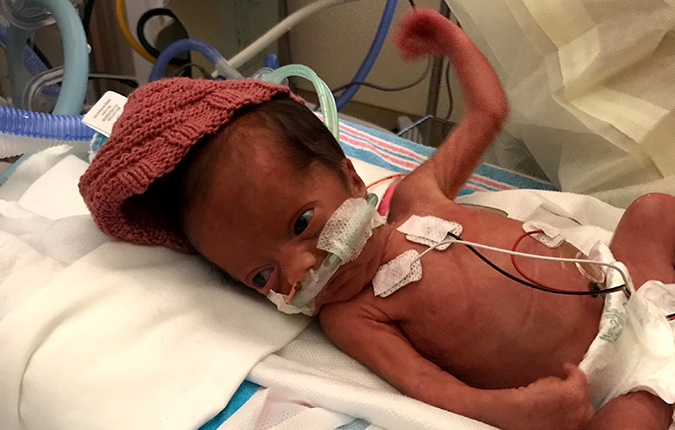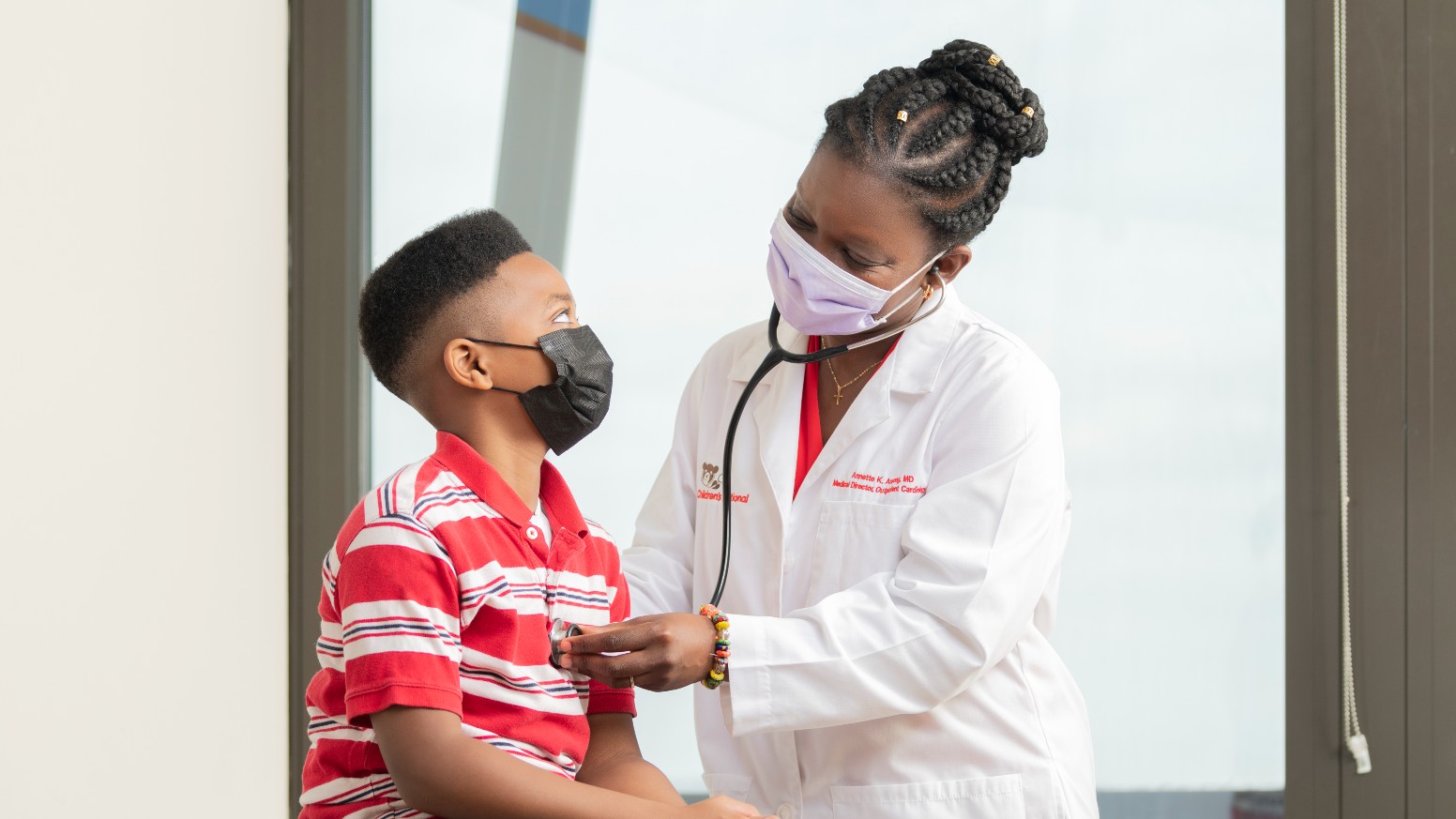Condition
Pediatric Pulmonary Stenosis

Pulmonary stenosis is a congenital (present at birth) defect that occurs due to abnormal development of the prenatal heart during the first eight weeks of pregnancy.
The pulmonary valve is found between the right ventricle and the pulmonary artery. It has three leaflets that function like a one-way door, allowing blood to flow forward into the pulmonary artery, but not backward into the right ventricle.
With pulmonary stenosis, problems with the pulmonary valve make it harder for the leaflets to open and permit blood to flow forward from the right ventricle to the lungs in a normal fashion. In children, these problems can include:
-
A valve that has leaflets that are partially fused together.
-
A valve that has thick leaflets that do not open all the way.
-
The area above or below the pulmonary valve is narrowed.
There are four different types of pulmonary stenosis:
-
Valvar pulmonary stenosis. The valve leaflets are thickened and/or narrowed
-
Supravalvar pulmonary stenosis. The pulmonary artery just above the pulmonary valve is narrowed
-
Subvalvar (infundibular) pulmonary stenosis. The muscle under the valve area is thickened, narrowing the outflow tract from the right ventricle
-
Branch peripheral pulmonic stenosis. The right or left pulmonary artery is narrowed, or both may be narrowed

Pulmonary stenosis may be present in varying degrees, classified according to how much obstruction to blood flow is present. A child with severe pulmonary stenosis could be quite ill, with major symptoms noted early in life. A child with mild pulmonary stenosis may have few or no symptoms, or perhaps none until later in adulthood. A moderate or severe degree of obstruction can become worse with time.
Pulmonary stenosis is a component of half of all complex congenital heart defects.
Pulmonary stenosis accounts for 5 to 10 percent of all congenital heart defect cases.
Frequently Asked Questions
What causes pulmonary stenosis in children?
Why is pulmonary stenosis a concern in children?
What are the symptoms of pulmonary stenosis in children?
How is pulmonary stenosis diagnosed in children?
What is the treatment for pulmonary stenosis in children?
What can I expect after my child's pulmonary stenosis procedure?
What is the long-term outlook after pulmonary stenosis repair in children?

Cardiac Surgery at Children's National Hospital
The pediatric heart surgery team at Children's National Hospital performs twice the number of surgeries of any other hospital in the region, with some of the best outcomes in the nation. Discover more about the treatment we offer.

Providers Who Treat Pulmonary Stenosis
- Helping Maddie to Live Life to the Fullest
Maddie is a lively, creative teen who loves to act. Research at Children's National Hospital helps to ensure that her rare disease doesn"t upstage her big theater plans or her love of life.
Departments that Treat Pulmonary Stenosis
Prenatal Cardiology Program
Children diagnosed with heart conditions before they are born receive comprehensive, expert care from our fetal cardiology specialists. Learn more about our Prenatal Cardiology Program.















